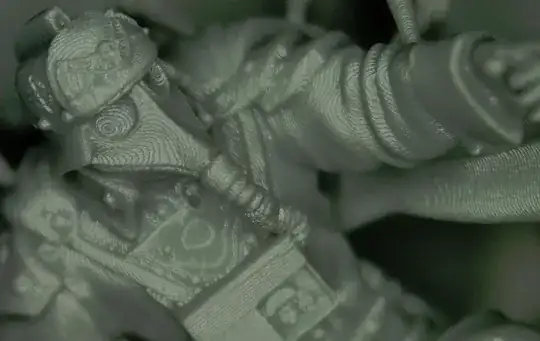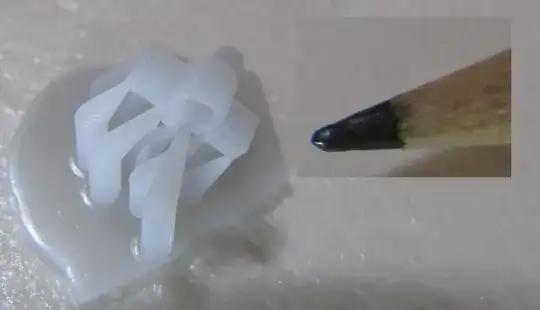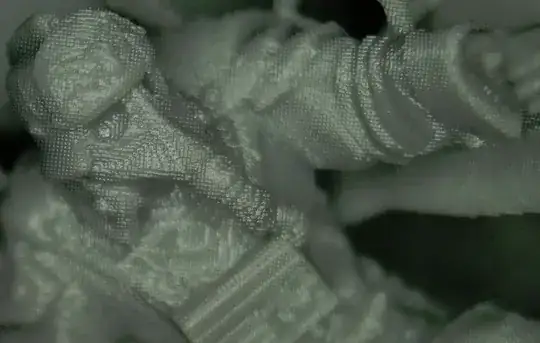I am not familiar with 3D printing at all, is it possible to print tiny objects with some 3D printing technology that is available to a consumer audience? I am not talking about microscopic scale, but about say a figurine that is 4mm tall. However, the size required for the eye of the figurine, for instance, would be in the ballpark of 0.5 millimeters (500 microns) in diameter.
-
1The Form 3 (resin, SLA) may be a bit pricey for the general hobbyist, but the resolution and dimensional accuracy goes down to 10 microns (depending on material) in Z and 25 microns in X/Y. I regularly print tiny 1-2" tall figurines and the facial details come out amazing. – Jason C Oct 18 '21 at 00:10
1 Answers
Resin
Today's hobby grade resin printers are capable of amazingly tiny detail. The hole is about 1.5 mm diameter, and the pencil point in the photo below is of the same scale as the part. It was farther out of the frame and composited in to provide a better reference.
This part was constructed on request of a train aficionado desiring to have hinges for the freight cars he was building.
Details that are not holes would be more easily accomplished. Depending on the orientation of the figurine, you can get between 0.037 mm and 0.050 mm resolution. This is due to different resolutions in the x/y plane and the z-plane. If the figurine's feature was vertical, the z-resolution could be 0.050 mm but the x/y resolution would be 0.037 mm.
There's a great reference page from Chitubox describing the different technologies as well as a couple photos.
 This image is of a model constructed with 0.047 mm resolution. The following image is of a model constructed at 0.100 mm resolution.
This image is of a model constructed with 0.047 mm resolution. The following image is of a model constructed at 0.100 mm resolution.
Above images from linked site.
FDM™
Referencing the comment below, it should be noted that the above information is specific to resin printers. It is very much different when discussing filament printers. Filament printers (FDM™ or FFF) will have much coarser resolutions. It's typical to have layer thickness (z-resolution) of 0.100 mm. Every one of my FFF printers can print at that resolution.
The x/y resolution is based on the nozzle diameter. The common nozzle is 0.40 mm diameter, limiting the resolution to slightly greater than that, as the filament will bulge as it is extruded.
One can find 0.25 mm nozzles and expect approximately 0.30 mm width of deposited filament. I've read of 0.10 mm nozzles, but once you reach that level, it's time to think of resin printing.
I had attempted to print the door hinge bracket on my FFF printer, using 0.100 mm layer height on a 0.40 mm nozzle. It was a complete mess.
- 10,532
- 1
- 10
- 24
-
Thank you! To determine whether it is worth a try to print the figure, is Layer Thickness the spec parameter that I should be looking at? For instance, [this printer](https://www.creality.com/goods-detail/ender-3-v2-3d-printer) says it has layer thickness of 0.1-0.4mm. This I imagine is the z-resolution, and might correlate approximately with x/y resolution. – Cel Oct 17 '21 at 12:51
-
1edited reply to include filament printer assessment as per your comment. SE does not have direct contact options, otherwise I'd suggest I can create a test print on my resin printer for your own assessment. – fred_dot_u Oct 17 '21 at 16:14
-
1@Cel Btw, SLA is the name of the tech here; or MSLA. Those are the common resin printing processes (SLA [e.g. the Form 3] uses a UV laser to scan out each layer, while MSLA [e.g. the Elegoo Mars] uses a UV LCD display to flash the entire layer at once, there's speed vs. quality tradeoffs). FDM (e.g. the Prusa i3) is the kind that draws layers with melted plastic like a plotter. FDM usually has lower res. than [M]SLA but larger volumes, and FDM also uses actual plastic instead of resin approximations. There's sintering and plasma processes too but those are more industrial processes currently. – Jason C Oct 18 '21 at 00:25
-
2@JasonC, you'll also noted that FDM™ is a registered trademark, while FFF is the generic description. FDM™ is associated with Stratasys. The processes involved are different between the two systems as well: https://makerindustry.com/fff-vs-fdm/ – fred_dot_u Oct 18 '21 at 14:01
-
1The smallest nozzle that is in the e3D catalog is 0.15 mm. I'd expect 0.175 mm line width from that. My "detail" printer I run with a 0.2 mm nozzle and 0.25 mm line width / 0.1 mm Layer height. – Trish Oct 18 '21 at 15:56
-
1Also, Further Reading: https://3dprinting.stackexchange.com/questions/6965 (why to use wider lines than the nozzle), https://3dprinting.stackexchange.com/questions/6968 (Line Width) – Trish Oct 18 '21 at 16:06

